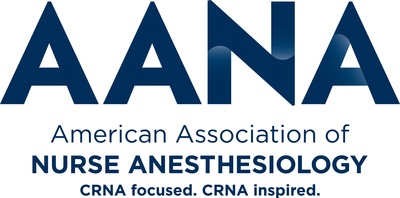AANA Warns Proposed Student Loan Cap Would Put Nurse Anesthesia Education and Patient Care at Risk
PR Newswire
ROSEMONT, Ill., Nov. 26, 2025
ROSEMONT, Ill., Nov. 26, 2025 /PRNewswire/ -- The nation's anesthesia workforce will face a devastating blow if the U.S. Department of Education (ED) moves ahead with plans to cap unsubsidized student loans for future Certified Registered Nurse Anesthetists (CRNAs) at just $100,000. The move stems from provisions of the One Big Beautiful Bill Act and the ED's draft definition of "professional degrees," which excludes the nurse anesthesiology profession as written and subjects student registered nurse anesthetists to the lower loan cap.
The draft definition is a notable departure from the Trump administration's consistent support for the CRNA and APRN workforce. The ED's current draft rule stymies this momentum and jeopardizes the future anesthesia workforce and patient access to care, particularly in rural and underserved communities.
"The Department of Education's current draft definition creates an anticompetitive environment among anesthesia providers," said the American Association of Nurse Anesthesiology (AANA) President Jeff Molter, MSN, MBA, CRNA. "Critical care nurses pursuing careers as CRNAs could be pushed away from the profession if access to unsubsidized federal loans is capped, all while physician anesthesia residents continue to receive the full $200,000 loan allotment."
CRNAs are required to hold a doctoral degree and are trained and educated to provide high-quality anesthesia services. Studies continue to show that their outcomes are comparable to their physician anesthesiology counterparts. Unfortunately, CRNA education does not receive funding from the almost $21 billion that goes into Graduate Medical Education (GME) annually. Unlike physicians, who are able to utilize GME money to pay their residents, CRNA students are often unpaid during their clinical training. Due to the rigor of the program, this leaves CRNAs heavily reliant on student loans for their education, but they are a dependable return on that investment.
"Capping loan amounts for nurse anesthesiology programs will not decrease tuition," explained Molter. "Much like physician anesthesia programs, CRNA programs carry the cost of expensive equipment for training, malpractice insurance, and competitive pay for high-quality, experienced faculty. Current students have expressed grave concern, sharing that a $100,000 loan cap isn't just a policy number on paper, but the difference between becoming a CRNA or a financial barrier pushing nurse anesthesiology out of reach for many."
CRNAs are an increasingly critical segment of the anesthesia workforce nationwide. While more physician anesthesiologists are retiring and the number entering the workforce is dwindling, the CRNA workforce is expected to grow 9% by 2034. In 2024, 2,866 new CRNAs entered the profession whereas there were just 2,039 first-year physician anesthesia resident positions. Further, U.S. News reports just a 1.9% unemployment rate for CRNAs, and the profession overwhelmingly repays student loans with a default rate of just 0-1% reported for 2024.
"Capping student loans for CRNAs makes no sense and will only serve to exacerbate the shortage of anesthesia providers and impede access for patients—particularly those in rural and underserved areas—where CRNAs are often the sole anesthesia provider, meeting patients where they need them the most," said Molter.
The AANA urges the ED to realign with Trump administration priorities on fostering competition and choice in the healthcare system by ensuring the inclusion of the nurse anesthesiology profession in the higher student loan cap.
"For a profession that delivers the majority of anesthesia across the United States, particularly in rural and underserved communities and the United States military, access to fair lending limits isn't just about educational opportunity," said Molter. "It is about safeguarding the future workforce and protecting patients' access to safe, high quality anesthesia care."
For more information on the education and training of CRNAs, visit anesthesiafacts.org.
![]() View original content to download multimedia:https://www.prnewswire.com/news-releases/aana-warns-proposed-student-loan-cap-would-put-nurse-anesthesia-education-and-patient-care-at-risk-302626991.html
View original content to download multimedia:https://www.prnewswire.com/news-releases/aana-warns-proposed-student-loan-cap-would-put-nurse-anesthesia-education-and-patient-care-at-risk-302626991.html
SOURCE American Association of Nurse Anesthesiology


